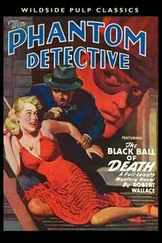But though, gripped as they were by collective hysteria, it is easy to believe that they subjected their bodies to such an ordeal, it is impossible to accept that they could have repeated the dose two or three times a day for thirty-three days. The rules of the Brotherhood precluded bathing, washing or changes of clothing. With no antiseptics and in such grotesquely unhygienic conditions, the raw scars left by the spikes would quickly have become poisoned. The sufferings of the Brethren would have become intolerable and it seems highly unlikely that any Flagellant would have been physically capable of completing a pilgrimage. The modern reader is forced to the conclusion that, somewhere, there must have been a catch. Possibly the serious blood-letting was reserved for gala occasions, such as that witnessed by Henry of Herford. Possibly two or three victims were designated on each occasion to attract the limelight by the intensity of their sufferings. The Flagellants were not fakes but some measure of restraint there must have been.
Certainly there was little in their chanting intrinsically likely to lead to total self-abandonment. The celebrated Ancient Hymn of the Flagellants, even in the Latin or vernacular German, was a pitiful little dirge; as remote from ecstatic excitement as a Women’s Institute Choir’s rendering of ‘Abide With Me’:
Whoe’er to save his soul is fain,
Must pay and render back again.
His safety so shall he consult:
Help us, good Lord, to this result…
— Ply well the scourge for Jesus’ sake
And God through Christ your sins shall take…
Woe! Usurer though thy wealth abound
For every ounce thou makest, a pound
Shall sink thee to the hell profound.
Ye murderers and ye robbers all,
The wrath of God on you shall fall.
Mercy ye ne’er to others show,
None shall ye find, but endless woe.
Had it not been for our contrition
All Christendom had met perdition… {170} 170 19 The translation is Babington’s from Hecker’s Black Death, p. 65.
A slightlier livelier refrain is quoted by Nohl:
Come here for penance good and well,
Thus we escape from burning hell,
Lucifer’s a wicked wight,
His prey he sets with pitch alight.
but even this lacks something as a stimulant.
The Flagellant Movement, at first at least, was well regulated and sternly disciplined. Any new entrants had to obtain the prior permission of their husband or wife and make full confession of all sins committed since the age of seven. They had to promise to scourge themselves thrice daily for thirty-three days and eight hours, {171} 171 20 Certain authorities prefer thirty-three and a half days.
one day for each year of Christ’s earthly life, and were required to show that they possessed funds sufficient to provide 4d. for each day of the pilgrimage to meet the cost of food. Absolute obedience was promised to the Master and all the Brethren undertook not to shave, bathe, sleep in a bed, change their clothes or have conversation or other intercourse with a member of the opposite sex.
The entrance fee ensured that the poorest members of society were barred from the Brotherhood; the strict rules, at first at any rate conscientiously observed, kept out the sensation-mongers who wished only to draw attention to themselves or to give unbridled scope to their passions. In these conditions, the public were generally delighted to receive the visits of the Flagellants and, at a small charge, to meet their simple needs. Their arrival was an event in the drab lives of the average German peasant; an occasion for a celebration as well as for the working off of surplus emotion. If the plague was already rife then the visit offered some hope that God might be placated, if it had not yet come then the penance of the Flagellants was a cheap and possibly useful insurance policy. Without at first being overtly anticlerical the movement gave the villager that satisfaction of seeing his parish priest manifestly playing second fiddle if not actually humiliated. Ecclesiastics had no pre-eminence in the movement; indeed, in theory, they were forbidden to become Masters or to take part in Secret Councils, and the leaders of the movement prided themselves upon their independence from the church establishment.
So bourgeois and respectable, indeed, did the movement at first appear that a few rich merchants and even nobles joined the pilgrimage. But soon they had reason to doubt their wisdom. As the fervour mounted the messianic pretensions of the Flagellants became more pronounced. They began to claim that the movement must last for thirty-three years and end only with the redemption of Christendom and the arrival of the Millenium. Possessed by such chiliastic convictions they saw themselves more and more, not as mortals suffering to expiate their own sins and humanity’s, but as a holy army of Saints. Certain of the Brethren began to claim a measure of supernatural power. It was commonly alleged that the Flagellants could drive out devils, heal the sick and even raise the dead. Some members announced that they had eaten and drunk with Christ or talked with the Virgin. One claimed that he himself had risen from the dead. Rags dipped in the blood they shed were treated as sacred relics. All that was lacking to give the movement the full force of a messianic crusade was a putative Messiah. Such a figure had appeared in the thirteenth century but though there may have been one or two local claimants, no major figure emerged on this occasion to lead the Brethren of the Cross into the Millenium.
As this side of the movement’s character attracted more attention, so a clash with the Church became inevitable. Already the claim of the Masters to grant absolution from sins infringed one of the Church’s most sacred and, incidentally, lucrative prerogatives. A number of dissident or apostate clerics began to secure high office in the movement and these turned with especial relish on their former masters. The German Flagellants took the lead in denouncing the hierarchy of the Catholic Church, ridiculing the sacrament of the eucharist and refusing to revere the host. Cases were heard of Flagellants interrupting religious services, driving priests from their churches and looting ecclesiastical property. Other heretics – the Lollards, the Beghards and the Cellites – made common cause with them in contesting the authority of the Catholic Church.
The parallel between the Pilgrimage of the Flagellants and the preceding ‘People’s Crusades’ became more apparent. According to John of Winterthur, the people were eagerly awaiting the resurrection of the Emperor Frederick who was expected to massacre the clergy and break down the barriers between rich and poor. {172} 172 21 Mom Germ., NS., III, p. 280.
This delectable vision fused in the popular mind with the apocalyptic ambitions of the Brethren. The movement took on a revolutionary character and began to direct the hostility of its audiences as much against the rich layman as the cleric. What was left of the merchants and nobles now deserted the movement in disgust, leaving the extremists free to direct its passions as they wished.
The loss of its bourgeois members in itself would probably have mattered little to the Flagellant Crusade. But as they trekked from plague centre to plague centre, often bearing infection with them to those whom they were supposed to succour, it was inevitable that many of their older members should perish, including the responsible leaders who had set the standards for the rest. To make up numbers, pilgrims were recruited less remarkable for their piety or their dour asceticism than for their failure to fit into any regular pattern of life. Bandits too discovered that a convenient way to enter a guarded town was to tack themselves on to the tail of a Flagellant procession. Little by little the more respectable citizens of Europe began to look with diminished favour on their turbulent visitors.
Читать дальше












